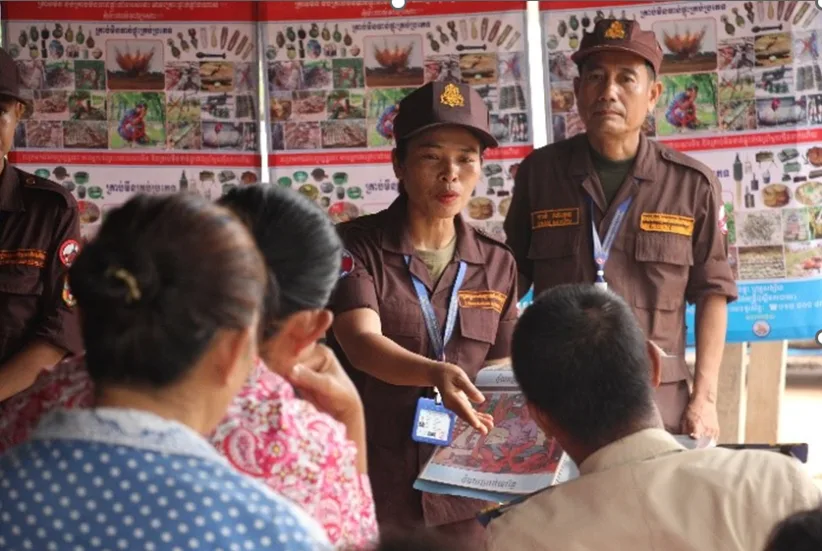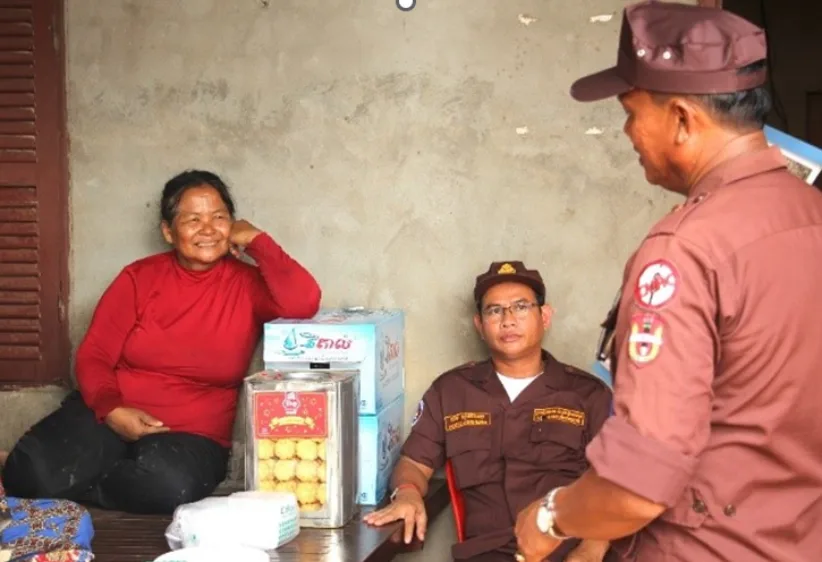Empowering Communities: The Lifesaving Impact of Risk Education in Cambodia
When Moch So Kheang first started working in the village, the community was unaware of The Cambodian Mine Action Centre. "People didn’t know about us and our operations. Sometimes, they wouldn’t even let us in their land," she recalls.

Since 2008, Kheang has been a dedicated CMAC staff member, working tirelessly to raise awareness about the dangers of explosive ordnance. Through daily operations and risk awareness efforts, the local community has become more informed, knowing what to do and how to report hazardous items to the village chief, local police, and the CMAC team.
"I was aware that my village had leftover explosive ordnance from the Vietnam War”, says Chin Pheap, a 51-year-old housewife from Sram Cheung village. “I was scared because of accidents with explosives in my village, but the arrival of the CMAC team brought me hope. They helped release the land to us and taught us safety activities. After attending the course, I learned about different types of explosive ordnance and realized how dangerous they are. I now avoid touching, moving, or burning them and report to the local police if I see any."
Since 1993, Mine Risk Education has been a cornerstone in reducing casualties and mitigating the adverse impacts of explosive ordnance on communities in Cambodia. As part of Cambodia’s National Mine Action Strategy, this initiative aims to foster safer behaviors among those living or working in explosive ordnance-affected areas. The program, now known as Explosive Ordnance Risk Education (EORE), is bolstered by accredited mine operators, the Ministry of Education, Youth and Sport, and various other institutions. A community-based approach ensures that risk education reaches schools and households in prioritized villages and communes across targeted provinces.
With support from PM/WRA, Norwegian People’s Aid Cambodia has partnered with the Cambodia Mine Action Centre to support their Demining Unit 5 in conducting cluster munition remnants surveys and clearance operations in eastern Cambodia. This effort spans the seven most cluster-munition-contaminated provinces from 2022 to 2026.

A key component of this initiative is the provision of EORE to local communities living in or near contaminated areas. The Demining Unit 5 also deliver EORE during Explosive Ordnance Disposal call-out responses, ensuring that communities are well-informed and prepared.
To enhance the effectiveness of EORE, CMAS has adopted a comprehensive lesson plan. This plan, combined with visual aids such as posters, books, and pictures developed by CMAC, has significantly improved the delivery of risk education. Kheang confidently uses these materials to educate villagers.
"After the session, they stop engaging in dangerous activities like moving or touching suspicious objects. They also know what explosive ordnance looks like and what to do if they encounter such items."
Chin Pheap expressed her gratitude to the CMAC team for their efforts in raising awareness and providing clearance in her community. To reinforce the community-based approach, CMAC has established a volunteer network comprising local authorities, police, teachers, and monks, ensuring strong outreach and effective reporting.
From October 2023 to June 2024, with funding support from PMWRA, CMAC DU5 teams, under NPA coordination and oversight, conducted 1,238 EORE sessions, reaching 20,480 people, including 4,107 men, 3,366 women, 6,513 boys, and 6,494 girls.

